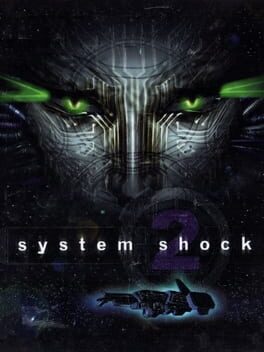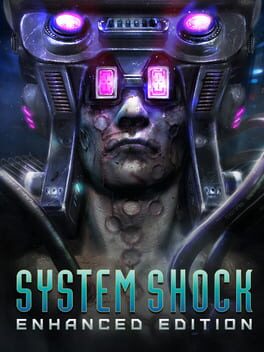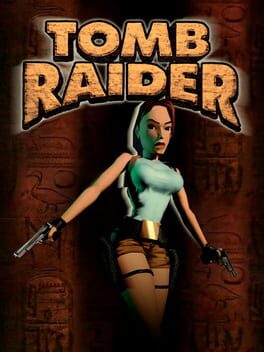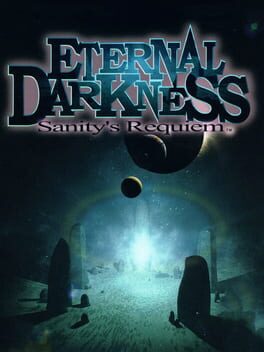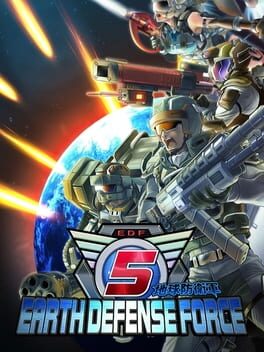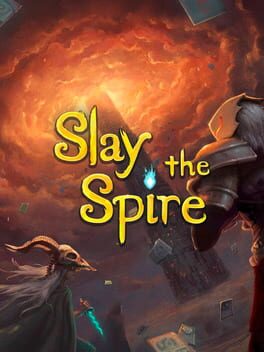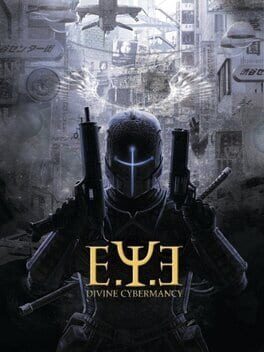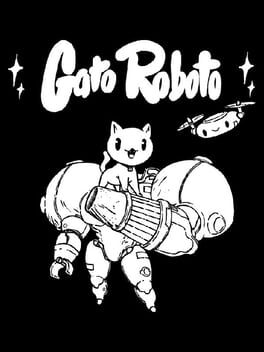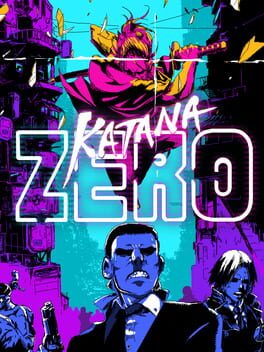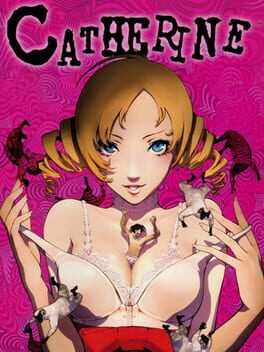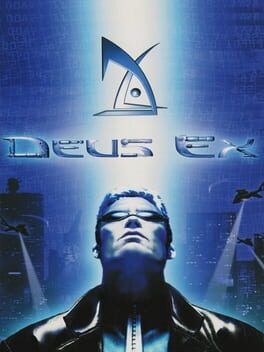1999
I liked System Shock 1 enough to jump directly into the sequel, which is something I rarely do. It didn't exactly disappoint, but my appreciation was stunted by knowing what it was able to build off. While the setting and villain formed a brilliant combination in the first game, this one falls victim to a comparatively disconnected story and gameplay. About 80% of your time is fixing random things that get in your way, sticking you in a narrative holding pattern until the big moments of development. The gameplay itself has been strengthened enough to hold up the weakened overall structure, but it’s disappointing that this compromise was made at all when the same pieces that made the original great are still here. However, the key word to that criticism is “compromise”, and the two games form a balance of priorities where one isn’t necessarily lesser than the other. With accessibility being one of System Shock 2’s advantages, this game is a much easier recommendation than the first one, even if it has the sting of missed potential. The story can be easily understood even if you skip the first game, but I would still recommend going in order if you can. It may not be required, but with how each game compliments the other, it would certainly give you the richest System Shock experience.
If you're going to compile a list of games that haven't aged well, System Shock would be a good first entry. The interface is the most arcane I have ever used in a game, which on top of early 2.5D FPS technology made starting this game comparable to running into a brick wall. I could see it being too much to get over for most people, but if you can commit, you’ll be surprised at how good this game still is. The crux of its quality is its infamous AI villain, SHODAN, and how beautifully she(?) frames the entire game. With the gameplay being about exploring a space station, having the antagonist be a personification of the station’s malice keeps the narrative feeling present, and all your victories are direct shots against your enemy. Pulling apart the station for resources isn’t just something you do to increase your strength, it cripples SHODAN’s control and turns the tables in your favor. It’s beautiful ludonarrative synchronicity, a quality I feel was lost as subsequent games simply copied the format. The Bioshock games also have you repairing and reclaiming your environment, but with villains disconnected from the setting itself, it can feel like a tedious distraction before the real conflict begins. Playing System Shock will give you so many little revelations like this, and you begin to understand where so many design tropes in successful first-person shooters came from. I recommend at least trying it out, even if I fully expect a lot of people to bounce straight off of it.
1998
Half Life made me disappointed in the evolution of its genre. The maturity of Half Life’s story might be what most games learned from, but the relentless variety should have been the real source of inspiration. Its science facility was such an elegant way to seamlessly join a diverse set of gameplay themes, since it contextualizes even the strangest combinations of environments smoothly. Industrial plants justify slow-paced exploration where the facility itself is your enemy, and they somehow blend into cramped offices which allow for tense atmosphere where aliens could be hiding around any corner, which then connect to wide-open zones used for fast-paced gun battling. These general categories will also get a unique twist in each iteration, creating even more variety in a system that was already keeping you on your toes. Even with so many different styles of play, the smart pacing between sections and the connectivity of the facility keeps the game feeling cohesive, and if I had absolutely no historical context, I would still be impressed enough to say it's one of the better shooter campaigns I’ve ever played. That is until the very end levels, at least. I won’t spoil exactly what happens if you’re one of the two people who don't know how the game ends, but suffice to say, they went overboard in creating something unique and ended up with a confusing mess. That's just one stain on an otherwise great experience though, so it’s the tiny parenthetical to avoid disappointment during an otherwise fantastic game.
1996
Describing what a movie is about is pretty easy. Most of the time it’s just a direct depiction of a story, so summarizing the plot is good enough. Things are a little different for games, because the gameplay and the story can be emphasized in varying degrees. For example, Tomb Raider seems to be about preventing powerful artifacts from falling into the wrong hands, when it's actually about jumping. As overly simple as that seems, its focus on the mechanics of jumping makes for the most compelling movement I've ever seen in a game. Modern games have jumping and climbing as an ancillary part of combat and exploration, but in Tomb Raider it’s the gameplay in itself. Even jumping straight up requires decision making, because grabbing onto things isn’t handled automatically. Forward jumps require you to actually build momentum with a run, and trying to jump before you’ve taken enough steps will lead to you sprinting off a cliff. While mostly used for combat, side jumps have their own niche uses, and so on. Every motion needs to be carefully considered against your list of options, because choosing poorly will make you lose part of your very scarce health supply. A system of limited save points also means that screwing up and falling into spikes can be extremely punishing, and you get used to taking every step seriously. It’s a nuanced and tense system for platforming that has gone woefully underutilized by the games of today. This is another case where I could describe all the little interactions and things you can do to improve your gameplay, but taking away the discovery would take away part of what makes this game so cool. In the latest Tomb Raider games, there’s nothing like this to discover. You'll automatically grab and stick to walls by moving the control stick and that's pretty much all that’s ever required. The sense of danger isn’t from the mechanics, but from the movie magic and visual spectacle. Even though the original doesn’t have those technological advantages, the sense of presence and personal involvement is so much greater than the modern interpretations of the genre. It accomplishes so much with so little that it's become one of my favorite games of all time.
This review contains spoilers
The mansion is a sacred setting for survival horror games. Mixing the familiarity of the home with the possibility of lurking danger is a proven method for creating a setting that’s relatable, yet mysterious. This would seem like a perfect fit for a Lovecraftian horror game, with the mansion representing the game’s universe as a whole. Things may seem normal on the surface, but the search for understanding will lead to some horrible discoveries behind locked and forgotten doors. That's not what this game does though. After the intro, most of the time spent in the mansion is within a singular room that’s used as a chapter select. From there, each chapter is a flashback to a different time and place, so there’s barely any reason to get invested in the situation of the character you most identify with. These flashbacks provide a little intrigue by presenting the plot through different characters’ perspectives, but it's not an effective way to convey horror. Since there's a reset button after every chapter, you never have to worry about the consequences of any of your actions. As a result, the horror is limited entirely to the subject matter of the narrative rather than its presentation. Nothing demonstrates this better than the fact that you can regenerate your health at the cost of some magic points, which you regain by… walking. The game has a sanity system that warps reality around you, but there are also spells to regenerate it for free, so the effects that were so well thought out will almost never occur. The gameplay ends up being about walking around, listening to people talk, and occasionally doing some subpar melee combat. Without a big redeeming quality, this game belongs on the ever-growing stack of Lovecraft-inspired games that failed to live up to the source material.
1995
After Final Fantasy 7 warmed me up to the JRPG genre, I decided to try my luck again and finish Chrono Trigger. It seems I had been too harsh in my initial assessment of the genre, because I ended up liking this game a lot as well. While it would be easy to point to the combat system or the plot as the reason why, it’s the less obvious elements like pacing and structure that made the game work so well. While there aren’t explicit chapters, the plot is broken into vignettes set in one of the game’s six time periods. For each time-period shift, the party members in the spotlight usually changes as well, so the story is always progressing on three levels. Firstly, the plot offers a slow progression that pays off occasionally in big moments. Secondly, hopping among time periods steadily provides details about how the world changed over time. Thirdly, the party members are always commenting on the plot, the world, or their own personal situation, providing a constant source of narrative progression. Even the sidequests use this three-part design on a smaller scale, so there’s never a point where the expectation is to run through some padded content to get your team some more levels. Nothing goes to waste, leading to a perfect pacing most RPG’s struggle to establish. It’s a great example of a holistically designed game that’s greater than the sum of its parts, so if you can give Chrono Trigger time to impress you, it almost certainly will.
If you’ve played Earth Defense Force before, you will be completely unsurprised with this game. It works the exact same as all the previous mainline entries, which is to say it's still a co-op focused 3rd person shooter where you go against thousands of enemies at a time, taking out giant ants, frogs, and aliens that are all modeled like there were on the PS2. These games look extremely cheap, but the focus on destructive scale makes it an incredibly pure gaming experience. The best way to describe it is that this is what someone in 1985 would imagine games of the future would be like. It wouldn't be cinematic and emotional, it would be a game with an entire city to run across, thousands of enemies to shoot, and giant explosions. It's a cheap thrill by design, but not many games dedicate themselves to being so unapologetically gamey that it's a refreshing change of pace. It may not stick in your mind for very long, but you'll still enjoy it the whole way through.
2019
I think reviews are most useful when the authors are clear about their preferences, so I’ll disclose that I am very biased against roguelikes and there are few I like at all. Slay the Spire was able to dodge a lot of that distaste with the absolute clarity in its mechanics. Even with the RNG inherent in a card-based roguelike, most randomness outside the deck itself has been stripped out. Enemies always display their next move and behave the same across runs, so you can plan for every move of a fight before it even begins. All the encounter types are shown on a map where different paths can be chosen, so it’s easy to account for different possibilities and adjust plans based on what you need. It’s a fair system that lets you enjoy the interesting mechanics with minimal repetition. The only point where the game breaks down is if you decide to go for the ultimate final boss. This boss is so difficult that each character only has one consistent win condition, and if you don't get set up with it, you'll lose pretty much every time. The game normally allows for a variety of playstyles, so it’s disappointing that the final content most players will experience is a tactical bottleneck. Considering you need to go out of your way to encounter that issue though, it’s a pretty easy recommendation even to people who aren’t typically roguelike fans.
2018
This is a modern adventure game that plays exactly how most modern adventure games seem to play out. That is to say, it's a visual novel where you can pick up items and rub them on each other. Your interest will hinge almost entirely on whether you're interested in the story, which is essentially a Dresden files modern supernatural mystery. If you're OK with adventure games and you like that sort of story, this is the game for you. In fact, this is very much the game for you, considering how much written content this game has. Each mission only allows for two people from your scooby gang of supernatural detectives, so there’s a ton of interactions that can only been seen on subsequent playthroughs. Puzzle solutions are also unique to each character’s abilities, so the developers put a lot of consideration into how genre fans would dig into it. It’s an easy recommendation if you’re that type of person, if not, it’s a safe pass.
This is possibly the king of obscure games. That's not because it’s the most obscure game ever made, but because its completely bizarre presentation encapsulates what’s great about niche titles. To oversimplify it, it’s essentially a total conversion mod of Half Life 2 that's mixed with Warhammer 40K fan fiction. Being built off of Half Life 2 can make it feel cheap, but leveraging the Source engine’s physics to emphasize the power of your cyber-augmented character was a smart decision. You slowly become more and more hilariously overpowered with each new ability, eventually being able to jump over buildings and sprint as fast as a car, so having weight and impact was critical to making progress rewarding. If you can stay interested in the game long enough to unlock those abilities, you’ll definitely have a fun time. However, the game is so dark and so narratively confusing that I think most people will drop out before it gets the chance to shine. Playing it co-op certainly helps, but this has its own issues with the way mission progress is saved only to the host. Your character progress is saved regardless, but repeatedly losing direct progression is demoralizing. So, the highs of maxing out your abilities are fairly equally matched with the lows of losing progress and parts that drag. If your desire to play as a godlike space marine is strong enough to withstand even the clunkiest level design though, you should give this game a try, because there isn't any other game out there that does it quite as well.
2019
This game sets out to copy Metroid. You might be thinking, “Of course it does, it's an indie game”, but this one is copying Metroid rather than Super Metroid. Naturally, this means the power ups are bog standard for the genre, with the usual sort of missile upgrade and power upgrades, nothing that will take you by surprise if you've played literally any other game in the genre. It’s like they came up with the concept of a cat in a robot suit being the protagonist and counted on it being funny enough to carry the entire game, because nothing else is interesting enough to be the selling point. It’s cute, but not cute enough to keep you fixated for more than two hours. If you have a couple bucks to spend and want a Metroid-inspired game, you could do worse, but I don't see why you wouldn't just pick up Hollow Knight to do a lot better.
2019
It's always worth celebrating innovation, but making something derivative can have its own benefits. Being able to analyze existing ideas and refine them can help push a genre forward and give fans an experience they can easily understand and enjoy. Katana Zero amazes me because it is entirely derivative, yet completely unpolished. It's as if the developers set out to copy games that they haven’t actually played. You have the brisk, ultraviolent action from Hotline Miami without the quick restarting that prevented it from getting frustrating. You have enemy layouts which reward fluid movement like in Ninja Gaiden, but the level design has you doubling back and breaking the pace. You have a slo-mo gauge that should require intelligent usage like Devil Trigger in Devil May Cry, but it simply regenerates on a timer. This creates a system where you feel like you should be competing levels in a cinematically violent flow, but you keep tripping over hurdles that kill momentum. The game even plainly displays this fact to you with its post-level replays that are in real-time. Almost all of them will include multiple moments you had to sit around for a few seconds waiting for your gauge to recharge, or time you had to spend doing some awkward platforming. Not only is there a total lack of momentum in the moment-to-moment gameplay, there’s none in the chapter-to-chapter progress. The amount of talky interludes is absolutely insane, and it doesn't lead to any narrative payoff. The story ends on a sequel bait cliffhanger, which is a pretty bold move for an indie studio. Ending the story before it can get interesting means I don’t care how it's going to end, accomplishing the exact opposite of what was intended. I don't recommend this game at all, you should just play one of the games it borrowed from instead.
1997
When a reviewer gives a negative opinion of a well-received game, you'll commonly see comments that the author is just biased against the genre. While bias is always a factor, I don't think that's particularly relevant criticism of an inherently subjective style of writing. Reviews reflect a single person's personal experience of the game, and shouldn’t be taken as anything more than that. Each review contributes to the larger understanding of the game, which should be used as the guiding point for consumers more than any singular piece. That's why it's important for people of different backgrounds to contribute to the forum and represent a game’s entire potential audience. In short, a reviewer should simply be honest about their biases and not pull punches about their true feelings. In the spirit of this, I would like to say that I am very biased against JRPG's, but I would also like to say that I absolutely loved Final Fantasy 7. I was dreading playing it for the longest time, because it's not a genre I'm interested in, and because I already knew about The Big Spoiler. I figured that without the impact of the biggest emotional moment, it would just be a slog with standard RPG combat and nothing to keep me motivated. However, not only was the combat way better than I was expecting, the story had more twists and turns that completely caught me off guard. I'm almost thankful for The Big Spoiler because it shielded the other reveals from being talked about, ones that I think are much more satisfying and interesting. While I want to dissect what made it so enjoyable, it’s probably better for me to temper the positive vibes, because it's received enough of that over the years. I don’t have any unique perspective to share, and it’s so widely beloved that you should check it out regardless of the specifics.
2011
The common consensus of this game is that it’s two unrelated halves welded together. There’s the block-pushing puzzle half, and the romance anime half. While I agree that it’s weird how separate each element is, I found it to be an interesting sort of pacing. The gameplay is a hectic puzzler where you have to think on your feet, rearranging a wall of blocks to get to the top as each layer below slowly collapses and prods you to keep moving. It hits a sweet spot where you have to be decisive but calm, with simple mechanics that require you think multiple steps ahead. The low-key romance anime interludes were a nice cooldown period, and you can choose to spend however much time you want chatting people up until you’re ready to take on the next level. The problem is that it’s easy for one of these two parts to disappoint, given that neither are good enough to stand on their own. If you become annoyed by one half and interested only in the other, the amount of interruption will be frustrating. The weaker half was definitely the story for me, with a lot of moments I found pretty questionable, only staying afloat with some good dialog and interesting bizarre moments. The gameplay on the other hand more easily held my interest, with loads of room for creativity once I got a grip on the various techniques, even if the creative potential is at the expense of depth. If there’s a running theme here, it’s that Catherine is a game with a lot of components that barely work, but work nonetheless. It’s a good pick-it-up-on-sale candidate if the sound of this odd construction intrigues you.
2000
A lot of games claim to be inspired by Deus Ex, but it’s hard to tell what that actually implies. The most common elements would be an open approach between action and stealth, character upgrades focusing on opening up new routes, and a plot with room for player choice. While Deus Ex has all these things, they only capture the surface level of what is so impressive about the game. What stands out is the level of reactivity to the player that’s much more than just chastising players who kill too much. It’s actually just the opposite, to give one example. Taking out a terrorist cell with lethal force will have some people within your organization respect you more, but others will quietly voice their distaste. Characters will react to the path you took, the weapons you used, or if you did something really bizarre. A lot of choices aren’t presented in a binary way, and choosing to thoroughly assess your options can even affect the outcome in its own rite. It’s extremely impressive how elegantly the game reacts to all the ways players could interact with it, so getting invested in it and being perceptive actually pays off. Antiquated presentation makes the buy-in for that experience relatively high, but it’s worth the personal investment even after so many games have tried to serve as the definitive successor.
Note: Learning to appreciate an old game shouldn’t mean you have to appreciate a barely functional game. I highly recommend Kentie’s launcher, which lets it work perfectly on modern systems. No gameplay or art assets are modified.
Note: Learning to appreciate an old game shouldn’t mean you have to appreciate a barely functional game. I highly recommend Kentie’s launcher, which lets it work perfectly on modern systems. No gameplay or art assets are modified.
